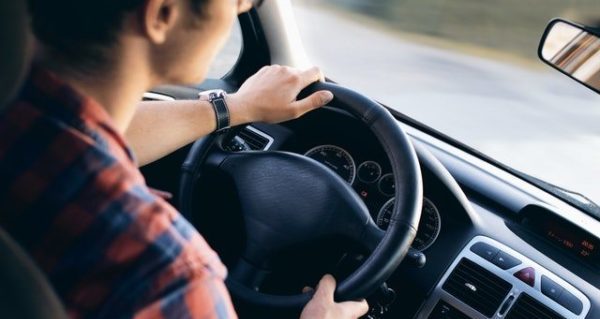 Auto technology has steadily taken more control from drivers and the cars of the future are almost here. So it’s time to talk about how that future should be shaped and managed. And how humans must maintain ultimate control.
Auto technology has steadily taken more control from drivers and the cars of the future are almost here. So it’s time to talk about how that future should be shaped and managed. And how humans must maintain ultimate control.
One hundred years ago, we started cars with a hand crank. Fifty years ago, we manually shifted the gears. Thirty years ago, we learned about threshold braking and how to pump our brakes to prevent going into a skid. Thirty years ago, we also had to keep our foot on the gas pedal, even on the longest drives, to maintain speed.
These days, the only drivers who use these skills do so by choice since these technologies are standard on virtually all new vehicles.
Newer vehicles also have adjusting cruise, allowing you to remain on cruise and maintain a safe distance from the car ahead of you. They have sensors that help keep you in your lane. They have blind-spot sensors to alert you about nearby cars when changing lanes. They have warning sensors and cameras to make backing up easier. They have GPS to suggest the best possible route.
In the very near future, there will be cars that remove the human component completely. At that point, technology essentially creates cars that drive better – and more safely – than humans.
They’re being tested today – these aren’t hypothetical cars of the future. So now is the time to have a conversation about how this technology should operate.
BlackBerry is respected for the security of its tech devices. So it’s reassuring to see the company weighing in on computer-driven, Internet-connected cars. Recently, BlackBerry released a report with recommendations that are a promising start to the conversation around this emerging technology. Among its proposals:
- make certain products are only sourced from trusted suppliers with extensive testing to ensure quality;
- ensure that all components are isolated from each other so if one is infected, it won’t necessarily impact other components;
- require constant validation and security testing to ensure safety;
- establish rapid response to issues that arise and constant sharing of information between suppliers so they can fix issues quickly together;
- ensure constant maintenance and regular software updates.
In 2015 in Canada, auto accidents caused 1,858 deaths and 161,902 injuries. In the United States (with almost 10 times the population), 38,300 people were killed and 4.4 million suffered serious injuries.
In an urban grid, where all cars are computer-controlled, we would see a massive reduction in injury and death. We would also see a more efficient system featuring faster travel. Rush-hour traffic jams could be a thing of the past.
However, there are serious concerns about computer-driven cars, including the danger of malicious agents hacking into and controlling cars or the larger grid. Viruses and other various malicious code impact our phones and computers. There’s real worry that cars will be similarly susceptible. If your computer gets breached, the worst thing that can happen is identity theft (which is pretty bad). If your car gets breached, it could kill you.
The BlackBerry report is a good first step, although the recommendations are more academic than pragmatic. The expectation that all major automakers would come together and agree on a standard implementation of hardware and software is quite optimistic.
Ultimately, any universal guidelines should include the necessity to install a mechanically-based override switch that can’t be disabled by hackers. It must be capable of overriding all computer-controlled systems, handing the operator direct control over steering, acceleration and braking.
As we move to automated systems, vehicles will be in constant communication, receiving directions from the grid. That means the system must include a means of communicating with the grid when a vehicle is under human control.
Because, ultimately, an automated system can’t jeopardize drivers who are trying to save themselves.
Eamonn Brosnan is a research associate for Frontier Centre for Public Policy.
Eamonn is a Troy Media Thought Leader. Why aren’t you?
The views, opinions and positions expressed by columnists and contributors are the author’s alone. They do not inherently or expressly reflect the views, opinions and/or positions of our publication.


